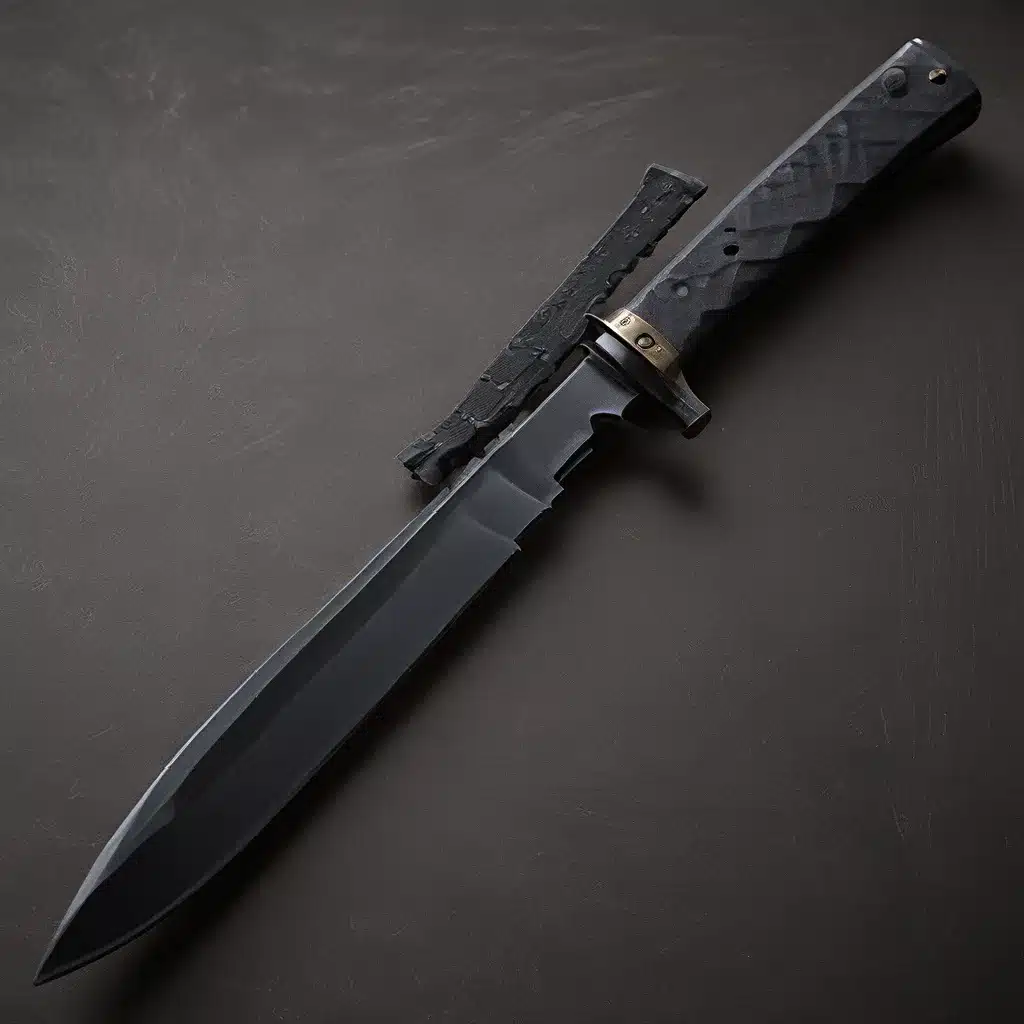
From Samurai Swords to Modern EDC: The Enduring Allure of the Tanto
I’ll never forget the first time I held a Japanese Tanto in my hands. It was sleek, elegant, and radiated a sense of power that I couldn’t quite put my finger on. As I ran my fingers along the distinctive blade shape, I was transported back in time, imagining the Samurai who had wielded these formidable daggers in centuries past.
The Tanto has long captivated the imagination of knife enthusiasts and blade aficionados alike. This unique Japanese blade, with its characteristic triangular cross-section and sharp point, has evolved from a utilitarian tool of the Samurai to a sought-after collectible and everyday carry (EDC) item in the modern era. But what is it about the Tanto that continues to captivate us, and how has it endured through the ages?
The Origins of the Tanto: From Utility to Symbol of Status
The origins of the Tanto can be traced back to feudal Japan, where it was primarily used as a stabbing and utility dagger by Samurai warriors. These fearsome blades were often carried in conjunction with the iconic Katana sword, forming the Daisho – the “big-little” combination that was the hallmark of a true Samurai.
According to historical accounts, the Tanto was valued not only for its practical applications in battle but also as a symbol of status and prestige. Samurai would sometimes carry a particularly well-crafted Tanto as a secondary weapon, a testament to their skill and social standing.
Interestingly, the Tanto was not exclusive to male Samurai. Women in feudal Japan would also occasionally carry a smaller version of the Tanto, known as a Kaiken, tucked into their obi (sash) for self-defense. This multifunctional role of the Tanto, both as a practical tool and a status symbol, contributed to its enduring popularity and cultural significance.
The Evolution of the Tanto Blade
As the Samurai era gave way to the Meiji Restoration and the modernization of Japan, the Tanto’s role and design began to evolve. While the traditional Tanto with its distinct triangular cross-section remained in use, bladesmiths also began experimenting with new variations and styles.
One such variant was the Yoroi Toshi, a Tanto with a particularly thick cross-section that was designed to pierce the armor of enemies. This thicker blade was thought to provide added penetration power, making it a formidable weapon on the battlefield.
Another intriguing development was the emergence of the Shinogi-less Tanto, a design that lacked the traditional edge bevel, or “shinogi,” resulting in a more streamlined and triangular profile. This simplicity of form was often favored for its functionality and ease of manufacture, making it a popular choice among both Samurai and commoners.
As the Tanto transitioned from a primarily military tool to a more versatile everyday carry, bladesmiths continued to refine and reimagine the design. The Tanto began to be seen not just as a weapon, but as a multi-purpose utility knife, finding its way into the hands of chefs, artisans, and outdoor enthusiasts.
The Tanto’s Resurgence in Modern Times
In the late 20th century, the Tanto experienced a resurgence of interest, driven in part by the growing popularity of Japanese culture and martial arts in the West. Collectors, knife enthusiasts, and tactical gear aficionados began to seek out these distinctive blades, fueling a renewed appreciation for their unique design and historical significance.
Companies like Herman Knives have played a pivotal role in this renaissance, offering expertly crafted Tanto knives that combine traditional Japanese aesthetics with modern materials and techniques. These blades have found a loyal following among those who value the Tanto’s combination of functionality, tradition, and style.
But the Tanto’s appeal extends beyond the realm of collectors and enthusiasts. In recent years, the Tanto has also emerged as a popular choice for everyday carry (EDC) knives, with its sharp point and sturdy construction making it a versatile tool for a wide range of tasks.
The Enduring Allure of the Tanto
So, what is it about the Tanto that continues to captivate us, even in the modern era? I believe it’s a combination of factors – the blade’s rich history, its distinctive design, and its versatility as both a practical tool and a symbol of tradition and craftsmanship.
When I hold a Tanto in my hands, I can’t help but feel a sense of connection to the Samurai warriors who once wielded these blades. There’s an undeniable sense of power and precision in the Tanto’s form, a testament to the skill and dedication of the bladesmiths who have perfected its design over centuries.
But beyond its historical significance, the Tanto also holds a certain timeless appeal. Its sleek, minimalist lines and sharp, functional profile make it a visually stunning addition to any knife collection or EDC setup. And the fact that it can be used for a wide range of tasks, from precision cutting to self-defense, only adds to its versatility and practicality.
As I continue to explore the world of Japanese blades, I’m consistently amazed by the Tanto’s ability to captivate and inspire. Whether you’re a collector, a martial artist, or simply someone who appreciates the beauty and craftsmanship of fine edged tools, the Tanto is a blade that is sure to leave a lasting impression.
So, if you’ve never had the opportunity to experience the Tanto for yourself, I encourage you to seek one out. Explore its history, appreciate its unique design, and discover the timeless allure that has made it a revered and enduring part of Japanese culture. Who knows – you just might find that the Tanto casts a spell on you, just as it has on countless others throughout the ages.


